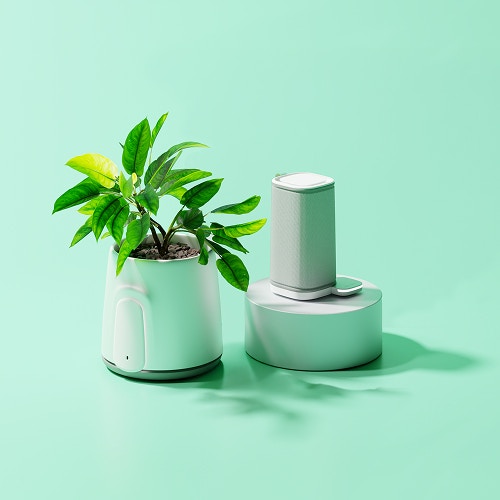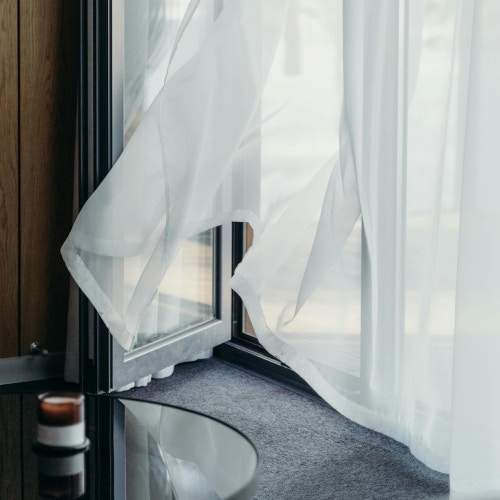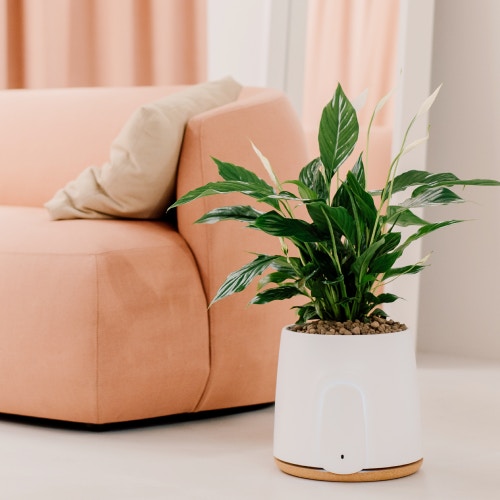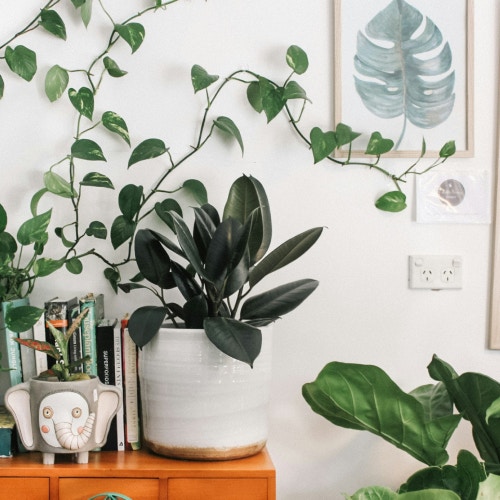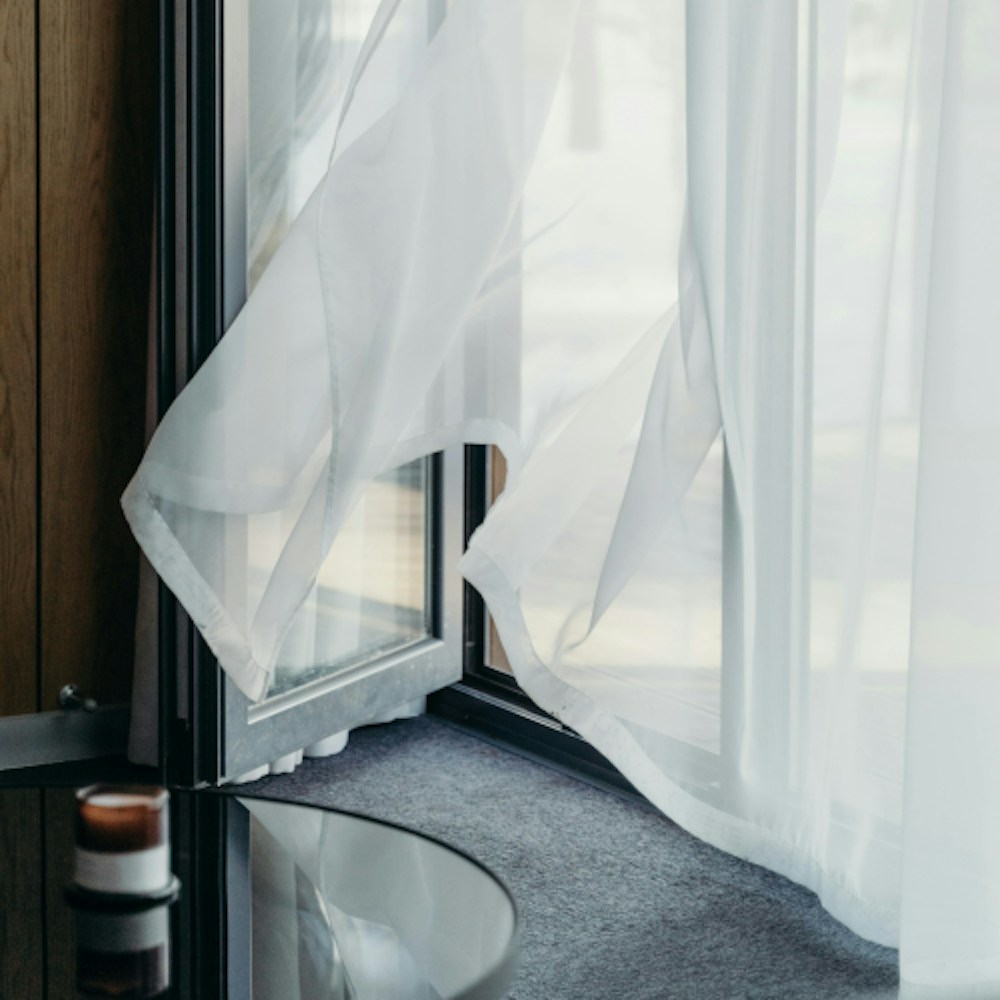
Why is it important to open the windows even in winter?
→
Fresh air also in winter: how to improve the quality of indoor spaces and prevent health issues.
- Why is the air we breathe in our homes important
- Why air exchange is essential at home
- What’s in the air we breathe
- How to manage humidity at home and prevent mold
- Why an air purifier is essential at home in winter
- How the Eteria personal air purifier works
- The importance of monitoring temperature and humidity at home: how to do it with Eteria

Why is the air we breathe in our homes important
The quality of the air we breathe at home is more important than we think, especially considering that we spend up to 97% of our time indoors.
The air inside our homes can hide numerous dangers, coming both from external sources and from indoor factors. Pollutants like smog, fine particulate matter, cigarettes' smoke, cleaning products, and building materials can contaminate the indoor environment. Among these, volatile organic compounds (VOCs) and carbon dioxide (CO₂) are particularly problematic, as they can cause headaches, respiratory irritation, allergies, and negatively impact sleep quality and concentration.
The risk is even higher for children, the elderly, and people with respiratory or allergic conditions. Exposure to indoor pollutants, such as secondhand smoke or gases from combustion, can increase the likelihood of developing respiratory diseases, cardiovascular problems, asthma, allergies, and, in some cases, cancer. Furthermore, contaminated air can have detrimental effects on the nervous system, altering behaviour and cognitive functions.
For these reasons, it's essential to pay attention to the air quality inside our homes, adopting effective solutions to keep it healthy and breathable, thus protecting our health and that of our loved ones.

Why air exchange is essential at home
It is crucial to understand how to ventilate your home correctly, particularly by determining the necessary amount of time to keep windows open to allow for adequate exchange between stale and fresh air. There is no universal solution for every situation, but it's important to consider several factors that help identify the most effective methods for indoor ventilation. Air circulation in your home must occur efficiently, avoiding excessive impact on energy bills. A helpful tip is to ventilate one room at a time: this way, you can air out the living room while cooking, and vice versa, turning off the heating in the room with the open windows to prevent increased energy consumption.
Alternatively, if air circulation is done with the heating system off, it can be beneficial to change the air in the entire house all at once, then close the doors and windows and turn the heating back on as needed.
In general, to renew the air in individual rooms, about 5 minutes is sufficient—a good amount of time to ventilate the space. Keeping windows open for extended periods doesn't offer benefits; in fact, it can negatively impact energy consumption. It's also advisable to ventilate at specific times of the day, such as in the morning when you wake up, after cooking, or after using harmful chemical cleaners during house cleaning.

What’s in the air we breathe
Without proper ventilation, the air inside homes can accumulate pollutants such as dust, cooking fumes, humidity, and CO₂, all of which can damage our health.
Here are some concrete examples:
- In the kitchen: When we cook, vapors, fumes, and grease are released into the air, which can linger and compromise air quality. Opening windows or using an exhaust hood helps reduce these contaminants.
- In the bathroom: The humidity generated during a shower can lead to mold formation. Good ventilation reduces this risk and improves comfort.
- In the bedrooms: The CO₂ we breathe out can accumulate overnight and affect sleep quality. Ventilating the room before sleep helps ensure a more restful night, and opening the windows in the morning can eliminate the stale air that has built up overnight.
In summary, proper air exchange helps eliminate harmful substances, reduce the risk of allergies and respiratory issues, and keep the indoor environment healthier and more comfortable.

How to manage humidity at home and prevent mold
The most effective solution to prevent the accumulation of humidity and mold formation in the home is to ensure continuous and automatic air exchange. This not only helps maintain a healthy environment but also reduces the risks related to respiratory problems and allergies.
Daily activities such as taking a shower, cooking, or washing dishes produce moisture, which, in poorly ventilated spaces, facilitates mold growth and the proliferation of dust mites. Therefore, proper ventilation is essential to maintain an optimal humidity level and minimise these risks.
To avoid mold formation, it is crucial to ensure good air circulation. Regularly opening windows, especially in rooms like the bathroom and kitchen, allows fresh air to enter and steam to exit.
Scientific research has shown that the presence of mold in indoor environments can contribute to the development of health problems, causing allergic reactions and respiratory irritations. Therefore, it is essential to eliminate mold and prevent its formation.
Adequate air exchange not only reduces humidity but also removes other pollutants from the environment, such as particulate matter and volatile organic compounds (VOCs).
For ventilation to be truly effective, it must be continuous and active 24/7, allowing pollutants to be removed without excessively wasting the heat in the outgoing air. Only in this way can we breathe fresh, clean air and improve the well-being of those living in the home.
Why an air purifier is essential at home in winter
In winter, indoor air quality tends to worsen due to reduced ventilation, heating systems, and higher humidity levels. During this time, we tend to keep windows closed to retain heat, but this prevents natural air exchange, increasing the concentration of pollutants such as CO₂, VOCs (volatile organic compounds), fine dust, and allergens like dust mites. An air purifier helps remove these substances, keeping the air fresh and clean even when we cannot open the windows.
Additionally, using wood stoves, fireplaces, and boilers during the colder months increases indoor air pollution with emissions of smoke, fine particles, and carbon monoxide. An air purifier reduces the concentration of these harmful particles, improving safety and health at home.
Higher humidity and poor ventilation in winter also encourage mold growth and bacteria proliferation, which can compromise the indoor environment's health. Air purifiers with specific filters help reduce humidity and prevent these issues.
Finally, the drier and more polluted air can negatively impact sleep quality and respiratory health, worsening irritations, coughs, and breathing difficulties. Air purifiers can also capture viruses and bacteria, reducing the risk of seasonal illnesses like colds and flu.
In summary, an air purifier in winter is essential for improving indoor air quality, reducing health risks associated with pollution, humidity, allergies, and respiratory diseases, and creating a healthier and more comfortable living environment.

How the Eteria personal air purifier works
Eteria provides dual-stage purification. First, there is an external pre-filter that blocks larger particles like pollen, hair, and dust. The air is then directed to the heart of Eteria, where an innovative next-generation photocatalytic filter eliminates pollutants. Eteria is an advanced system that monitors key air quality parameters in real-time, such as CO₂, VOCs, particulate matter (PM2.5 and PM10), and humidity. Thanks to its advanced sensors, it quickly detects pollutant levels and activates a cutting-edge filtration system, removing allergens, bacteria, and micro-particles.
Unlike other air purifiers, which are designed to be stationary, Eteria was created to be portable and lightweight, allowing it to be moved from room to room. Additionally, Eteria features a ceramic filter that does not require replacement. This undoubtedly results in significant cost savings and full sustainability.
Most commercial air purifiers are made with HEPA filters that need to be periodically replaced. Furthermore, various small pollutants can escape these types of filters, which can even become breeding grounds for mold and bacteria if not properly replaced. All these issues make purification less effective.
Studies have also shown that, in addition to VOCs, toxic gases, and chemicals, photocatalytic units can neutralise many dangerous gases such as carbon monoxide and nitrous oxide—pollutants that often escape standard units using only HEPA technology.

The importance of monitoring temperature and humidity at home: how to do it with Eteria
Eteria's technology not only purifies the air but also provides continuous monitoring of indoor pollution levels, notifying the user via a mobile app when interventions are needed. This ensures a consistently healthy home environment, optimising comfort and safety. Eteria's sensors constantly analyse the surrounding air and send the collected data to the Vitesy Hub app. Through the app, you can track the detected values and receive updates on the air quality in your home. The app also offers graphs and daily or weekly reports to monitor air quality trends over time.
With this feature, Eteria allows you to maintain constant control over indoor air quality, enhancing the comfort and well-being of your home.
